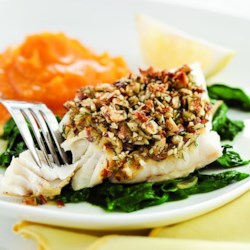What You Need To Know About Cholesterol
Cholesterol is a waxy, fatty substance naturally found in blood and produced in the liver-and consumed in food. It has many functions in the body, such as cell membrane support, bile production, Vitamin D production and hormone production-So its not entirely bad!. There are two forms of cholesterol in the body, LDL (the bad) and HDL (the good). Elevated levels of LDL (low density lipoprotein) are associated with increased risk of heart disease. It collects in the walls of your blood vessels and can create blockages. HDL (high density lipoprotein) absorbs cholesterol and carries it back to the liver, where it then gets flushed out. It is also important to understand triglycerides. Triglycerides are the fat found in our blood, and elevated levels increase our risk of stroke. So, what are the important numbers to know?
- Total Cholesterol: Less than 200
- HDL: 40 or higher for men, 50 or higher for women
- LDL: Less than 100
- Triglycerides: Less than 149
It is easy and important to know your numbers. All it takes is a simple blood test. There are a number of ways to lower/maintain a healthy lipid profile, but is is important to know that there is also a genetic predisposition to elevated cholesterol so family history is important. What can you do to protect your heart and lower your numbers or do once you have elevated numbers?
- Maintain a healthy weight: Being at an unhealthy weight can increase cholesterol, triglycerides and LDL. Even a decrease of 5-10% total body weight can have great improvement on heart health. So, staying within a healthy BMI range is important for heart health long term.
- Exercise: Getting that blood flowing helps to elevate HDL and lower LDL numbers. It is recommended to move our bodies at least 30 minutes most days (approximately 150 minutes each week). Find something you love and do it on a regular basis.
- Healthy diet: Foods high in soluble fiber, such as apples, oats, citrus, berries and whole grains naturally pull cholesterol out of the body, so, increase them in your diet. Increase Omega rich foods such as fatty fish-salmon, halibut, anchovies, as well as nuts, seeds and soy. Eliminate all trans fat-Margarine, foods with hydrogenated oils and fried foods. Decrease consumption of saturated fats such as butter, animal fat and full fat dairy and increase mono-unsaturated fats such as olive oil and avocado. It is important to note that research has shown that certain foods such as eggs and shrimp are safe to consume, because dietary consumption of these foods do not have a significant impact on blood cholesterol. There are people who are called “hyper responders”, a genetic condition, and those people should limit these foods and discuss there risks with their physician or RD.
- Medications: When lifestyle changes are not enough, it might be time to consider medications called statins that help to lower lipids found in blood. It is always important to discuss benefits and risks before taking statin medications. There are some alternatives such as intestinal agents, niacin, fibrates, and bile acid binders, but that decision should be made under the supervision of your physician.
Maintaining a healthy lifestyle is the best thing you can do for heart health, but it is important to know your numbers and if elevated, discuss options with your physician and RD!
Almond-&-Lemon-Crusted Fish with Spinach
From: EatingWell Magazine, January/February 2011
Ingredients 4 servings
-
- Zest and juice of 1 lemon, divided
- ½ cup sliced almonds, coarsely chopped
- 1 tablespoon finely chopped fresh dill or 1 teaspoon dried
- 1 tablespoon plus 2 teaspoons extra-virgin olive oil, divided
- 1 teaspoon kosher salt, divided
- Freshly ground pepper to taste
- 1¼ pounds cod (see Tip) or halibut, cut into 4 portions
- 4 teaspoons Dijon mustard
- 2 cloves garlic, slivered
- 1 pound baby spinach
- Lemon wedges for garnish
Preparation
- Active 25 m
- Ready In 25 m
- Preheat oven to 400°F. Coat a rimmed baking sheet with cooking spray.
- Combine lemon zest, almonds, dill, 1 tablespoon oil, ½ teaspoon salt and pepper in a small bowl. Place fish on the prepared baking sheet and spread each portion with 1 teaspoon mustard. Divide the almond mixture among the portions, pressing it onto the mustard.
- Bake the fish until opaque in the center, about 7 to 9 minutes, depending on thickness.
- Meanwhile, heat the remaining 2 teaspoons oil in a Dutch oven over medium heat. Add garlic and cook, stirring, until fragrant but not brown, about 30 seconds. Stir in spinach, lemon juice and the remaining ½ teaspoon salt; season with pepper. Cook, stirring often, until the spinach is just wilted, 2 to 4 minutes. Cover to keep warm. Serve the fish with the spinach and lemon wedges, if desired.
- Tip: Look for U.S. wild-caught Pacific halibut, U.S. Pacific cod or Atlantic cod from Iceland and the northeast Arctic. For more information, visit Monterey Bay Aquarium Seafood Watch at seafoodwatch.org.
- Easy cleanup: Recipes that require cooking spray can leave behind a sticky residue that can be hard to clean. To save time and keep your baking sheet looking fresh, line it with a layer of foil before you apply the cooking spray.
Nutrition information
- Per serving: 244 calories; 12 g fat(1 g sat); 4 g fiber; 8 g carbohydrates; 27 g protein; 146 mcg folate; 67 mg cholesterol; 1 g sugars; 0 g added sugars; 9,174 IU vitamin A; 18 mg vitamin C; 169 mg calcium; 4 mg iron; 508 mg sodium; 853 mg potassium
- Nutrition Bonus: Vitamin A (183% daily value), Folate (36% dv), Vitamin C (30% dv), Iron (22% dv)
- Carbohydrate Servings: ½
- Exchanges: 1 vegetable, 3 lean meat, 2 fat




